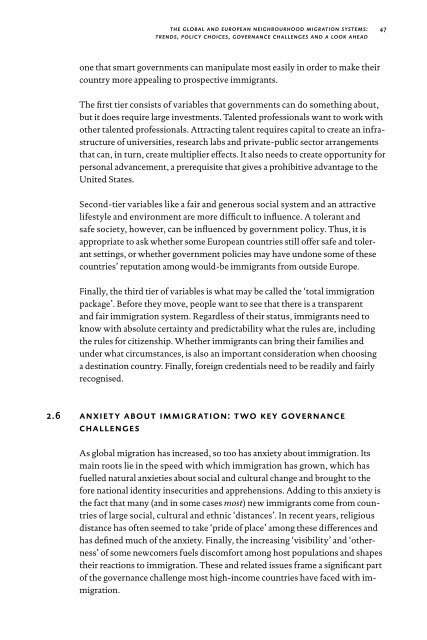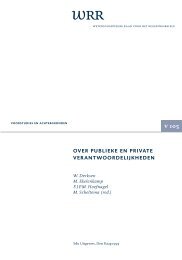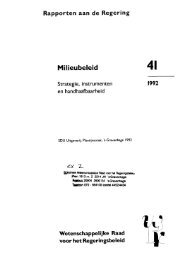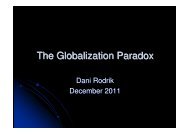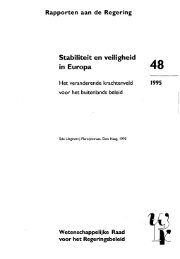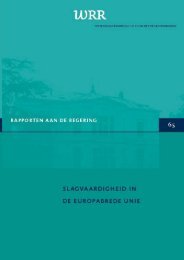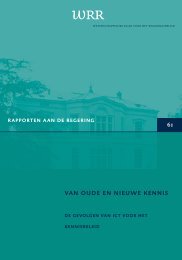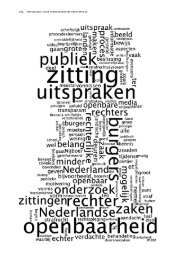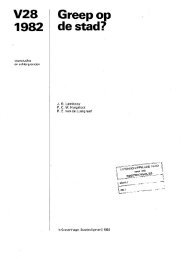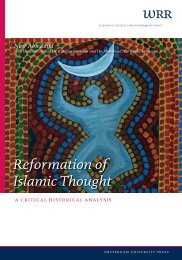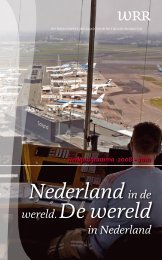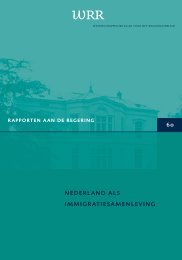Making Migration Work - Wetenschappelijke Raad voor het ...
Making Migration Work - Wetenschappelijke Raad voor het ...
Making Migration Work - Wetenschappelijke Raad voor het ...
- No tags were found...
Create successful ePaper yourself
Turn your PDF publications into a flip-book with our unique Google optimized e-Paper software.
the global and european neighbourhood migration systems:trends, policy choices, governance challenges and a look ahead47one that smart governments can manipulate most easily in order to make theircountry more appealing to prospective immigrants.The first tier consists of variables that governments can do something about,but it does require large investments. Talented professionals want to work withother talented professionals. Attracting talent requires capital to create an infrastructureof universities, research labs and private-public sector arrangementsthat can, in turn, create multiplier effects. It also needs to create opportunity forpersonal advancement, a prerequisite that gives a prohibitive advantage to theUnited States.Second-tier variables like a fair and generous social system and an attractivelifestyle and environment are more difficult to influence. A tolerant andsafe society, however, can be influenced by government policy. Thus, it isappropriate to ask w<strong>het</strong>her some European countries still offer safe and tolerantsettings, or w<strong>het</strong>her government policies may have undone some of thesecountries’ reputation among would-be immigrants from outside Europe.Finally, the third tier of variables is what may be called the ‘total immigrationpackage’. Before they move, people want to see that there is a transparentand fair immigration system. Regardless of their status, immigrants need toknow with absolute certainty and predictability what the rules are, includingthe rules for citizenship. W<strong>het</strong>her immigrants can bring their families andunder what circumstances, is also an important consideration when choosinga destination country. Finally, foreign credentials need to be readily and fairlyrecognised.2.6 anxiety about immigration: two key governancechallengesAs global migration has increased, so too has anxiety about immigration. Itsmain roots lie in the speed with which immigration has grown, which hasfuelled natural anxieties about social and cultural change and brought to thefore national identity insecurities and apprehensions. Adding to this anxiety isthe fact that many (and in some cases most) new immigrants come from countriesof large social, cultural and ethnic ‘distances’. In recent years, religiousdistance has often seemed to take ‘pride of place’ among these differences andhas defined much of the anxiety. Finally, the increasing ‘visibility’ and ‘otherness’of some newcomers fuels discomfort among host populations and shapestheir reactions to immigration. These and related issues frame a significant partof the governance challenge most high-income countries have faced with immigration.


